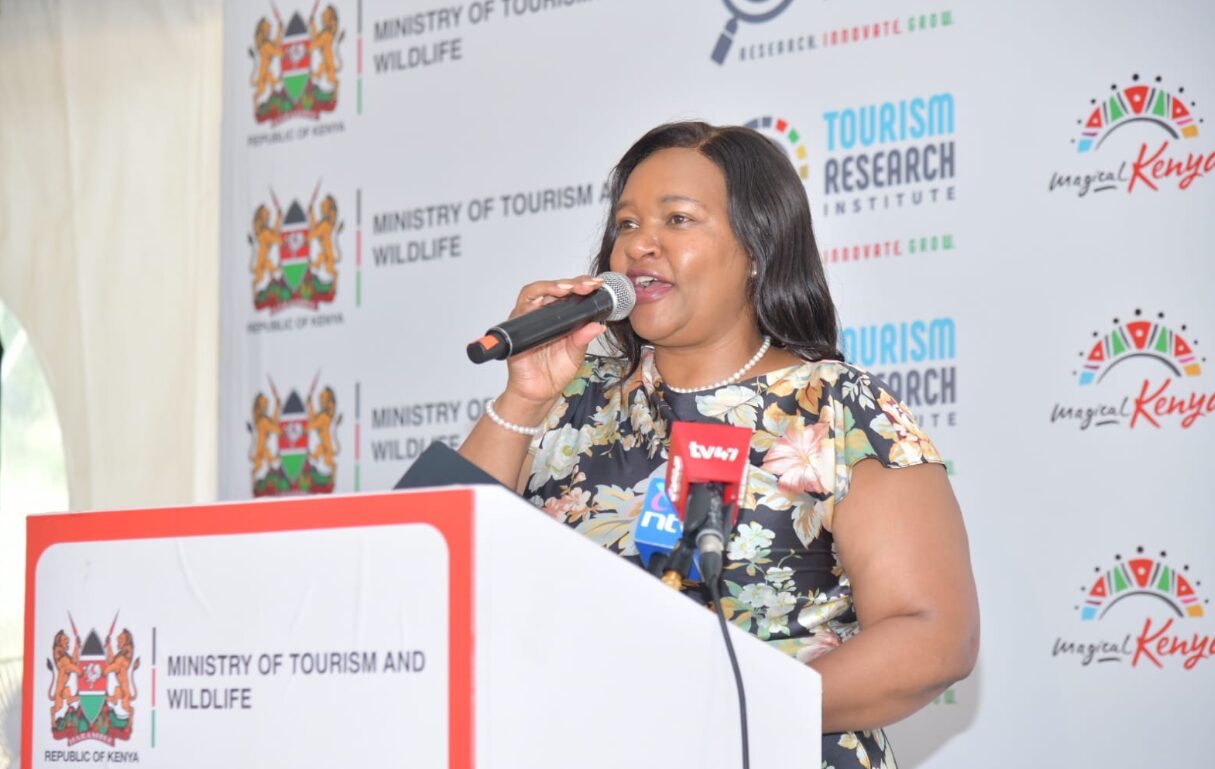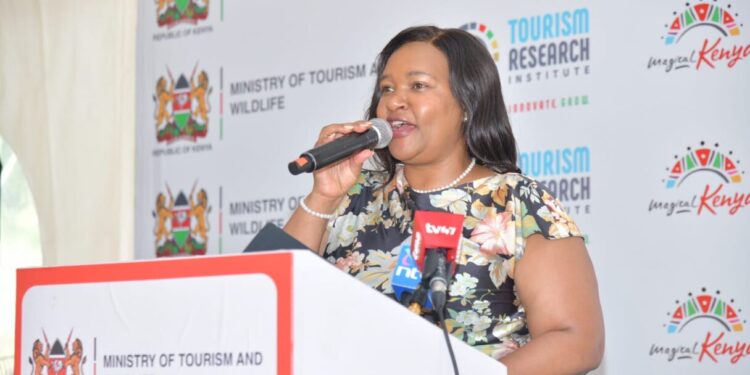Kenya’s tourism sector recorded its strongest performance in history in 2024, with international arrivals climbing to 2.4 million and revenues reaching Ksh 452 billion, a recovery that signals renewed confidence in one of the country’s largest foreign exchange earners.

Tourism Cabinet Secretary Rebecca Miano said the results marked the best year on record for the industry, cementing its position as a cornerstone of the economy and placing it on track toward an ambitious target of five million international tourists and 10 million domestic visitors by 2027.
Inbound arrivals grew 15 percent compared to 2023, driven by robust flows from the United States, which contributed 306,501 visitors or 12.8 percent of total arrivals, followed by Uganda at 9.4 percent and Tanzania at 8.4 percent.
Domestic tourism also showed strong growth, with bed-night occupancy rising from 4.6 million in 2023 to 5.17 million in 2024, reflecting a 12 percent increase as Kenyans traveled more frequently for leisure and business.
Speaking at the United Nations World Tourism Day celebrations in Mombasa, Miano said the performance reaffirmed the sector’s recovery trajectory after the Covid-19 disruption and stressed that tourism continues to be one of the largest sources of employment.
“Over 80 percent of all the employees in tourism and hospitality are young people, and this makes the sector an important engine for economic empowerment,” said Miano, noting that the industry supports 1.1 million direct jobs and more than 3 million indirect ones.
Government reforms aimed at easing travel have also played a role in the recovery, with improvements in electronic travel authorization, visa openness, and immigration services making entry into the country smoother for international visitors.
Miano added that opening the skies and licensing more airlines to operate directly into Mombasa is part of a broader plan to expand access and attract higher visitor numbers in the coming years.
Beyond wildlife and coastal tourism, the ministry is seeking to diversify Kenya’s offering to appeal to new market segments.
Cultural tourism is gaining popularity alongside adventure and wellness travel, while cuisine such as nyama choma and emerging interest in astro-tourism are being positioned as distinct experiences that can draw global attention.
Business and conference travel remains another area of expansion, with research showing that conference visitors spend two to three times more than leisure tourists.
Miano said plans are underway to establish a state-of-the-art conference facility to strengthen Kenya’s attractiveness as a regional hub for meetings and exhibitions.
She also noted that this year’s Magical Kenya Travel Expo, set for October 1–3, will host more than 400 exhibitors and 5,000 delegates.
County governments are being encouraged to set up tourism units within their inspectorates and develop councils to market unique local attractions.
Miano urged them to compile calendars of events that can be integrated into the national tourism framework, enabling international visitors to plan trips around regional activities.
She credited content creators with playing a role in promoting Kenya on digital platforms, saying their work helps to expand visibility of the country’s destinations.
Mombasa Governor Abdulswamad Nassir welcomed the strong performance of the sector and commended the Mombasa Tourism Council for revitalizing activities at the Coast.
He said the county had lined up a series of events leading into the December season to sustain momentum and attract both domestic and international travelers.
Tourism remains one of Kenya’s leading foreign exchange earners, contributing around 10 percent of GDP, and with current trends pointing upward, the government is betting on the sector to remain central to employment, currency inflows, and regional competitiveness in the years ahead.
Kenyan Business Feed is the top Kenyan Business Blog. We share news from Kenya and across the region. To contact us with any alert, please email us to [email protected]











